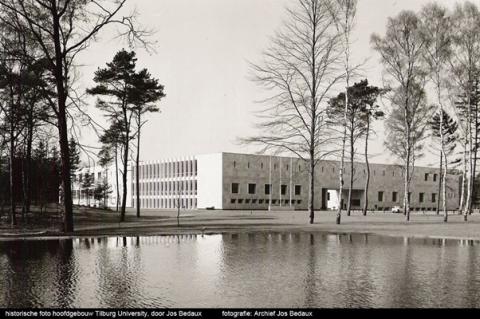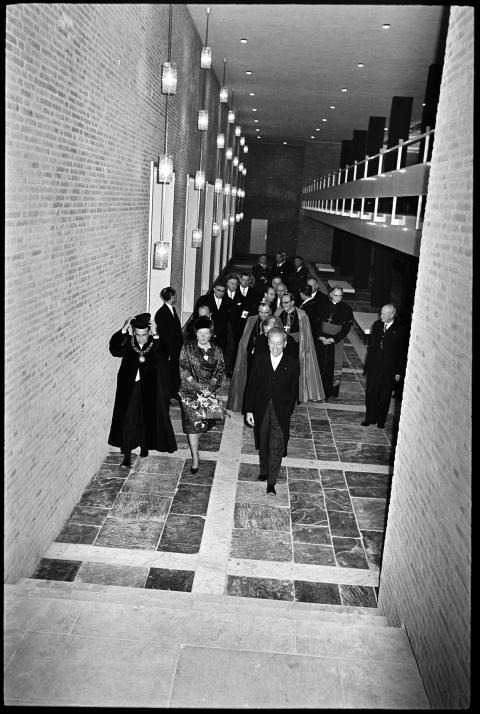Cobbenhagen building
By the time of the grand opening on November 13, 1962, the slow and arduous pre-history of the oldest building on campus had been pushed into the background. More than twelve years had passed before the creation of architect Jos. Bedaux came to fruition.

In 1950, through the mediation of Professor (and brother-in-law) Frans van der Ven, he received the commission for a new building. The locations in the inner city were becoming too small for the growing intake of students. The solution was moving to the still undeveloped edges of the city, a move toward a campus university like many universities in the country were making.
The building, for which the first foundation stone was laid in December 1959, was designed by Bedaux as a long walk full of varied experiences: cloisters, special patios, and light that enters in different ways. The use of muschel (shell) limestone on the exterior, Norwegian slate and marble, the masonry wall finishing, the high, wide corridors, and the use of intimate inner courtyards are also characteristic of the way Bedaux gave modernity its own face.
The building is greatly appreciated, although the occasional complaint can be heard that it is not always easy to find your way around. The building has seen countless officials, services, units, etc. come and go. Among the most permanent residents is the university administration, which was there from the very beginning—in room numbers 1 to 4.
The building has only started carrying the name Cobbenhagen Building since 2002, after the founder of the university. As of 1971, the building was listed as Building A, after the current Koopmans Building and Goossens Building were completed, which were called B and C until 2007, and were also designed by Bedaux. Just like Simon Building and the Sports Center.
In Cobbenhagen Building, Bedaux first gained experience with concrete skeleton work, where load-bearing elements are left in sight. In this case, it concerns the narrow concrete columns surrounding the inner garden. This refers to classical courtyard gardens and medieval monastic gardens: places surrounded by columns that were often used for study and reflection. For example, since the 4th century BC, Athens has known the "peripatetic teaching" provided by Aristotle, where this philosopher would have lectured while walking, sheltered from the fierce Greek sun. The facade features a wall relief by Jan Vaes, depicting the parable of the five wise and five foolish virgins.

More about history and academic heritage
The Tilburg University academic heritage is a very diverse set of archives, visual materials, collections, devices, recorded stories, et cetera that relate to the history of the university.
